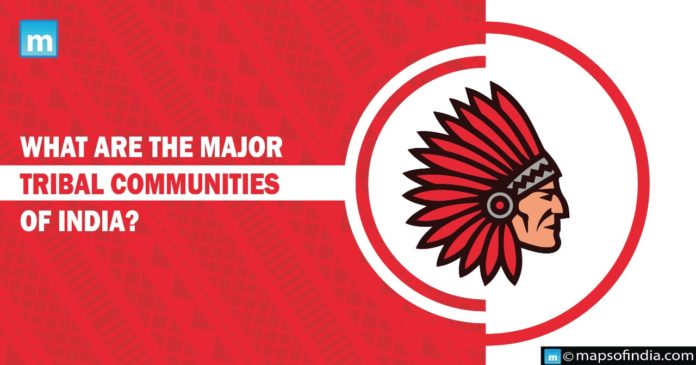Introduction:
- The tribes are the land’s indigenous inhabitants and are said to be the Indian Peninsula’s original settlers.
- They are called Adivasi, which means “original dwellers.”
- A great number of tribes existing in India are mentioned in ancient literature.
- People were separated into several tribes before expanding the caste system around the Brahminic age.
- A tribe is a self-contained, homogeneous unit with no hierarchical discrimination.
- There are severe abnormalities in tribal population studies since there are no clear-cut scientific standards for this purpose.
- The Gonds, for instance, are a scheduled caste in Uttar Pradesh, but they are a scheduled tribe in Madhya Pradesh.
- In Article 366 (25), Scheduled tribes are defined as “such tribes or tribal communities or sections of or segments within such tribes or tribal communities as are regarded to be Scheduled Tribes for the provisions of this constitution under Article 342.”
- Article 342 of the Indian Constitution identifies tribes or tribal communities considered scheduled tribes for the Indian Constitution in that state or Union Territory.
Tribal Population Growth
- According to the 2011 Census, indigenous people comprised 8.61% of the total population.
- They majorly reside in rural areas, and a small population of them reside in cities as well.
- From Census 2001 to 2011, tribal population growth was 23.66% compared to 17.69% for the overall population.
- Interestingly, the entire population of India has a sex ratio of 940 females per 1000 men, whereas the Scheduled Tribes have a sex ratio of 990 females per thousand males.
The following factors contributed to the increase in the population of scheduled tribes:
- The tribal population has grown at a high natural rate.
- Several tribes have been added to the list of scheduled tribes.
Tribal Distribution: State by State
- In Punjab and Haryana, as well as the Union Territories of Chandigarh, Delhi, and Puducherry, no communities have been declared as scheduled tribes.
- While Scheduled Tribes account for up to 94.43% of the entire population in Mizoram and 94.79% in Lakshadweep,
- Nagaland is the other Indian state with many Scheduled Tribes (86.48%).
- Meghalaya (86.15% of the total)
- The state of Arunachal Pradesh (68.79%)
- Chhattisgarh has the highest proportion of Scheduled Tribes people (30.62%), followed by Jharkhand (26.21%).
- Gujarat, Assam, Rajasthan, the Jammu-Kashmir area, and Goa are the four major states where more than 10% of the population is a part of a Scheduled Tribe. Maharashtra, Madhya Pradesh, and Odisha are home to one-third of India’s scheduled tribe population.
- In terms of absolute numbers, Madhya Pradesh has the biggest population of Scheduled Tribes, followed by Maharashtra and Odisha.
Major tribal communities and their states are listed below:
| Arunachal Pradesh | Monpa, Galo, Apatanis, Singpho, Abor | Andhra Pradesh | Andh, Kolam, Manna, Dhora | Little Andaman | Jarawa |
| Bihar | Asur, Parhaiya, Santhals, Birhor, Gond, Chero | Assam | Khasis, Garos, Chakma | West Bengal | Khond, Ho, Rabha |
| Goa | Dubia, Siddi, Naikda, Varli, Siddi | Gujarat | Bhil, Bamcha, Gamta | Uttarakhand | Buksa, Khas, Tharu |
| Himachal Pradesh | Gujjars, Khas, Lamba, Pangwala, Swangal | Chhattisgarh | Biar, Agariya, Bhaina | Andaman and Nicobar | Onges, Shompens, Sentinelese |
| Jharkhand | Birhors, Mundas, Bhumji | Jammu & Kashmir | Garra, Mon, Beda | Uttar Pradesh | Buksa, Kol, Tharu |
| Kerala | Aarayan, Uralis, Arandan, Malai | Karnataka | Iruliga, Bhil, Koraga | Tripura | Namte, Lushai, Halam |
| Maharashtra | Khond, Katakri, Rathawa, Bhunjia | Madhya Pradesh | Kol, Khond, Birhors | Mizoram | Raba, Lakher, Kuki |
| Meghalaya | Chakma, Hajong, Garos | Manipur | Chiru, Aimol, Angami | Odisha | Ghara, Santhals, Kharia |
| Nagaland | Angami, Garo, Mikir, Sema | Sikkim | Lepchas, Bhutia | ||
| Rajasthan | Damaria, Meenas, Sahariya | Telangana | Chenchus |




